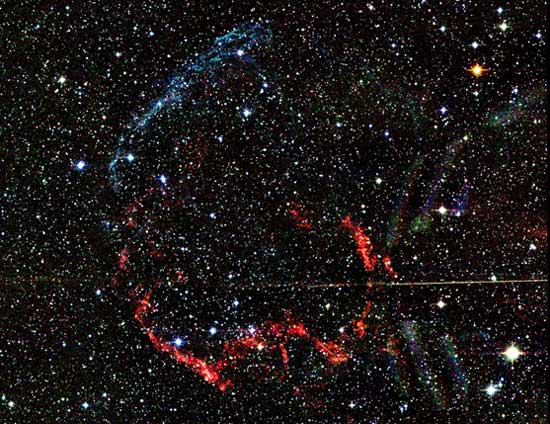Explanation: About 8000 years ago, a star in our Galaxy exploded. Ancient humans might have noticed the supernova as a temporary star, but modern humans can see the expanding shell of gas even today. In the above false-color infrared image of supernova remnant IC 443, blue denotes expanding gas where emission is dominated by excited iron atoms. Of particular interest, though, are the wisps of IC 443 colored red, as they are impacting an otherwise normal molecular cloud. Here emission from shock-excited molecular hydrogen is allowing astronomers to study how fast moving supernova gas affects star formation in the cloud. Additionally, astronomers theorize that the impact accelerates some particles to velocities near the speed of light. The horizontal line across the image is not part of the nebula.
1999 2000 2001 2002 2003 2004 2005 2006 2007 2008 2009 2010 2011 2012 2013 2014 2015 2016 2017 2018 2019 2020 2021 2022 2023 2024 2025 |
Yanvar' Fevral' Mart Aprel' Mai Iyun' Iyul' Avgust Sentyabr' Oktyabr' Noyabr' Dekabr' |
NASA Web Site Statements, Warnings, and Disclaimers
NASA Official: Jay Norris. Specific rights apply.
A service of: LHEA at NASA / GSFC
& Michigan Tech. U.
|
Publikacii s klyuchevymi slovami:
supernova remnant - supernova - vzryvy sverhnovyh - Sverhnovye - ostatok Sverhnovoi - udarnye volny
Publikacii so slovami: supernova remnant - supernova - vzryvy sverhnovyh - Sverhnovye - ostatok Sverhnovoi - udarnye volny | |
Sm. takzhe:
Vse publikacii na tu zhe temu >> | |
